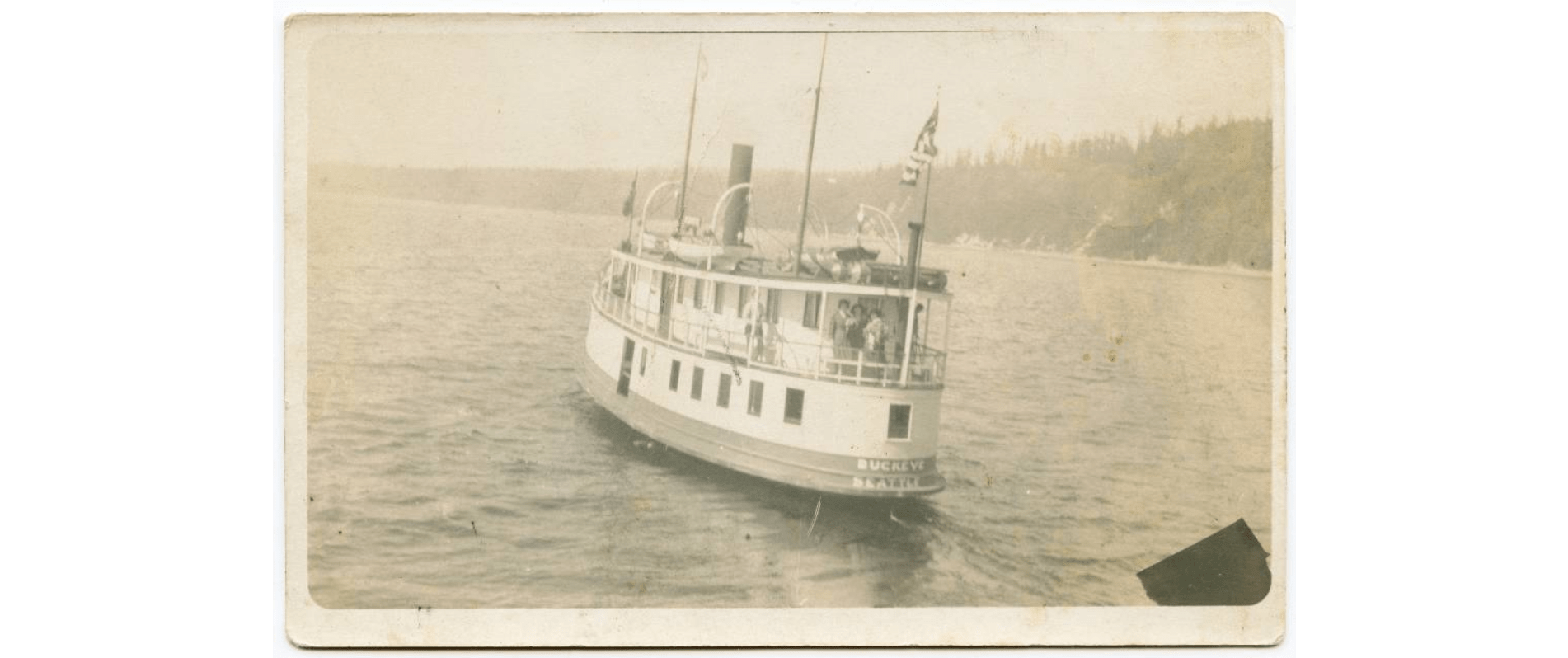The steamer "Buckeye" carrying passengers and cargo up and down Puget Sound makes a stop at Bush Point, near Freeland, Washington in 1914.
Built in Seattle in 1890, this 62-foot, 87 ton steamship is a great example of the Mosquito Fleet.
Puget Sound's historic "Mosquito Fleet" consisted of many hundreds of steamships that steamed from port to port around the sound from the 1850s to the 1930s. They were so numerous that people said they resembled a "swarm of mosquitoes." The heyday of the Mosquito Fleet ended in the 1930s when competition with rail and road transportation put the fleet out of business.
From the days of the earliest tribal canoes to the early 1930s, Puget Sound and the Inside Passage (the sheltered channel of water that runs between the British Columbia/Alaska coasts and the islands) constituted the major transportation corridor of the Northwest. Along this corridor, stretching from its southern reaches near Olympia north to the Alaskan Panhandle, nearly everything people needed moved by water transport.
Eventually, thousands of steam vessels, large and small, were built to move settlers, troops, farm produce and livestock, machinery, timber, the mail, and everything else needed to build and serve the settlements that sprang up along the coastline. Every settlement, no matter how small, had a pier or float. These "whistle stops" were their link to the greater community.
By the late 1920s and early 1930s, regular passenger and freight service among Puget Sound communities had reached the end. The completion of San Francisco’s Golden Gate Bridge in 1935, released a fleet of diesel-electric auto ferries that would soon come to Puget Sound to replace the old Mosquito Fleet vessels. The last scheduled run occurred in 1939. There is only a handful left; the rest were scrapped or left to rot, replaced by the cars and trucks on the Interstate 5 corridor and by Washington state’s modern ferry system.
This particular little ship was finally abandoned in 1930, having served for 40 years.
To view more photos from our past, visit our online historic photo archive.


